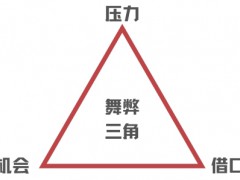???? 據ICIS-MRC網站3月29日莫斯科報道,據烴加工網稱,為了到2050年實現氣候中和和凈零排放的道路上實現更為雄心勃勃的目標,世界石化巨頭巴斯夫(BASF)也大幅提高了其2030年中期溫室氣體減排目標:該公司希望在全球范圍內將溫室氣體排放量較2018年減少25%。
????如果不考慮計劃增長的影響,這意味著到2020年代末,當前行業的二氧化碳排放量將減少一半。總體而言,巴斯夫計劃到2025年投資10億歐元,以實現新的氣候目標,到2030年再投資20億-30億歐元。因此,巴斯夫將投資40億歐元(約合47億美元),到2030年將溫室氣體(GHG)排放量比2018年減少25%。
????2018年,巴斯夫集團全球二氧化碳當量排放量達2190萬公噸。1990年排放量大約是兩倍。新的2030年排放目標與1990年的水平相比減少了約60%,超過了歐盟的減少55%的目標。
????巴斯夫公司執行董事會主席馬丁·布魯德米勒博士表示,新的氣候目標強調了我們的決心和巴斯夫對巴黎氣候協議的承諾。氣候變化是21世紀最大的挑戰。作為回應,我們必須調整我們的流程和產品組合。我們現在需要加快這一轉變。我們必須首先集中精力在這一旅程的最初階段,而不是最后階段。這就是巴斯夫將增加可再生能源使用的原因。我們將加快開發和部署化學品生產無二氧化碳工藝。通過透明化和系統性地、漸進式地減少巴斯夫產品在整個價值鏈中的碳足跡,我們幫助所有行業的客戶減少自己產品的碳足跡。
????到2050年實現二氧化碳凈零排放的長期轉型的核心是新技術的使用,新技術將用可再生能源取代天然氣等化石燃料發電。這些技術大多是巴斯夫與合作伙伴合作開發的,目前正處于試驗階段。這些技術的廣泛推廣要到2030年以后才能完全實現。為了在該日期之前加速避免二氧化碳排放,巴斯夫還繼續系統地對現有生產工廠實施持續改進流程。此外,巴斯夫將逐步轉向可再生能源,以滿足其電力需求,并打算投資風電廠,以促進這一需求。
????巴斯夫目前正在開發的最重要的新技術之一是用于基本化學品(如乙烯、丙烯和丁二烯)生產的電加熱蒸汽裂解器。這些化學品是眾多價值鏈的基石,對化工生產至關重要。氫是許多化學生產過程的另一種重要原料。為了實現無二氧化碳制氫,巴斯夫正在同時進行兩種工藝:商用的電解水和甲烷熱解,巴斯夫已經開發了一種新的工藝技術。另一個提高能源效率的重要手段是使用電熱泵從廢熱中產生不含二氧化碳的蒸汽。巴斯夫的目標是與西門子能源公司(Siemens Energy)合作,逐步將這項技術提升到工業規模,并將其用于整個工廠的余熱回收。
????據巴斯夫預計,轉向氣候中性生產工藝將導致該集團主要工廠的電力需求將在未來十年急劇增加,其中包括路德維希港最大的生產工廠。預計從2035年左右開始,該集團的電力需求將比目前高出三倍以上。
????郝芬 譯自 ICIS-MRC
????原文如下:
????BASF to invest up to USD4.7 bln to cut emissions 25% by 2030
????In pursue of more ambitious goals on its journey to climate neutrality and net zero emissions by 2050, BASF, the world's petrochemical major, is also significantly raising its medium-term 2030 target for reductions in greenhouse gas emissions: the company now wants to reduce its greenhouse gas emissions worldwide by 25% compared with 2018 ,according to Hydrocarbonprocessing.
????Excluding the effects of the planned growth, this means cutting CO2 emissions in half in the current business by the end of this decade. Overall, BASF plans to invest up to EUR1 billion by 2025 to reach its new climate target and a further EUR2 billion to EUR3 billion by 2030. Thus, BASF will invest up to EUR4.0 billion (US4.7 billion) to cut its greenhouse gas (GHG) emissions 25% by 2030 compared with 2018.
????In 2018, BASF Group’s worldwide emissions amounted to 21.9 million metric tons of CO2 equivalents. In 1990, this figure was roughly twice as high. The new 2030 emissions goal represents a reduction of approximately 60% compared to 1990 levels, which exceeds the European Union’s target of minus 55%.
????“The new climate goals underscore our determination and BASF’s commitment to the Paris Climate Agreement. Climate change is the greatest challenge of the 21st century. In response, we must adapt our processes and our product portfolio. We need to accelerate this transformation now. We must first concentrate on the initial steps of this journey, not the final ones. That is why BASF will increase its use of renewable energies. And we will accelerate the development and deployment of new CO2-free processes for the production of chemicals. With transparency and offerings to systematically and incrementally reduce the carbon footprint of BASF products throughout the entire value chain, we help our customers in all industries to reduce the carbon footprint of their own products,” said Dr. Martin Brudermuller, Chairman of the Board of Executive Directors of BASF SE.
????At the heart of the long-term transition toward net zero CO2 emissions by 2050 is the use of new technologies, which will replace fossil fuels such as natural gas with electricity from renewable sources. Most of these technologies are being pioneered by BASF in collaboration with partners and are currently in a pilot stage. Broad scaleup of these technologies will only be fully realizable after 2030. In order to accelerate the avoidance of CO2 emissions prior to that date, BASF also continues to systematically implement continuous improvement processes for existing production plants. In addition, BASF will progressively switch to renewable sources to meet its electricity needs and intends to invest in wind parks to facilitate this.
????One of the most important new technologies that BASF is currently developing are electrically heated steam crackers for the production of basic chemicals such as ethylene, propylene and butadiene. These chemicals are building blocks for numerous value chains and are essential for chemical production. Hydrogen is another important feedstock for many chemical production processes. To achieve CO2-free production of hydrogen, BASF is pursuing two processes in parallel: the commercially available water electrolysis and methane pyrolysis, for which BASF has developed a new process technology. Another important lever to increase energy efficiency is the use of electrical heat pumps to produce CO2-free steam from waste heat. BASF’s goal is to work with Siemens Energy to gradually ramp up this technology to industrial scale and use it for waste heat recovery at entire sites.
????BASF expects that this switch to climate-neutral production processes will lead to a sharp increase in electricity demand at the group’s major sites, including the largest production site in Ludwigshafen, in the coming decade. From around 2035, the group’s electricity demand is expected to be more than three times higher than it is today.
免責聲明:本網轉載自其它媒體的文章,目的在于弘揚石化精神,傳遞更多石化信息,并不代表本網贊同其觀點和對其真實性負責,在此我們謹向原作者和原媒體致以敬意。如果您認為本站文章侵犯了您的版權,請與我們聯系,我們將第一時間刪除。







